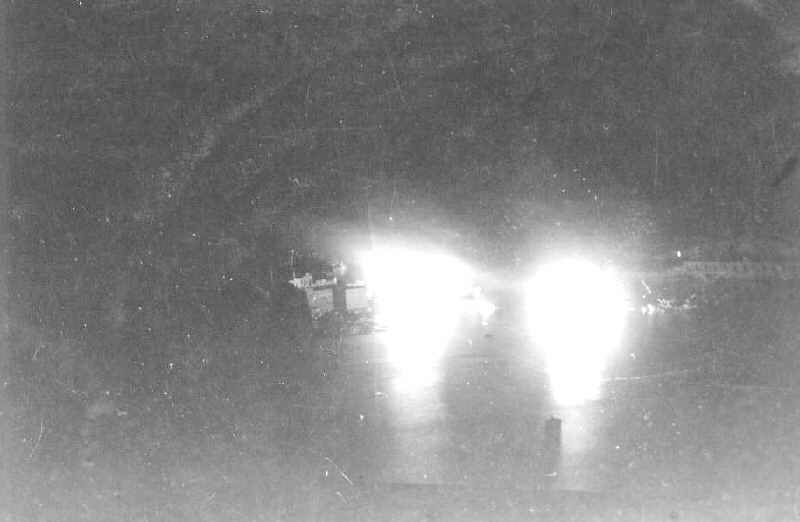HMS Maori
HMS Maori in Grand Harbour

HMS Maori blowing up in Grand Harbour after
being hit in night raid by Ju88s. Pure chance that it was photographed at that
moment.
HMS Maori was a destroyer which blew up
in February 1942. It was the largest explosion that many had felt.
Photo courtesy of Michael Longyear
Taken probably the morning after the raid sinking.
| At the time of Maori's sinking out of 7 night raiders crossing Maltas coastline 5 were picked up by searchlights, 3 out of these 5 were attacked & 2 out of these 3 were shot down probably by Beaufighters which were a highly successful night fighter.. |
Log
| 13th December 1941 | Arrived Malta with other destroyers Sikh, Legion & Isaac Sweers after they sank 2 Italian cruisers en route. |
Darren Martin sent me these photos taken on a dive
on the wreck of HMS Maori. Darren's message
reads -
'Hope you find the attached photo's of some interest. Hopefully those who
served aboard will get to have a look. The Photo's depict what remains of
the Ship's bow section.
There is about 50/60 Metres of the superstructure left with a small debris
field to the stern. As I understand it the stern was towed out into much deeper
water and sunk.
The bow was moved from Grand Harbour as it was a hazard to shipping and sunk
in about 17 Metres of water in St Elmo's bay'.
|
Interior ( Starboard Side hole) |
Starboard Side (Mast?) |
Interior hatch (Port Side) |
|
Rear Port Side as Wreck turns into debris field. |
Forward Winch Gear. |
Some sort of Telephony equipment? |
|
Originally thought to be a depth charge. |
View off the Starboard Deck plate to the sea floor. |
These are the sort of images tourists
don't see. |
|
Gillian Collins e-mailed me with this account from her father. My father (Wyndham Collins - alias Jumper) was sunk on the HMS Maori in Valetta Harbour. Here is an account of it he made a couple of years ago. He joined Maori as a seaman in Oct 1940 aged almost 17. She was one of twelve vessels (I think that he said they were all Destroyers, but don't quote me) named after Tribal Warriors. He served with the Atlantic Convoys out of Liverpool & Londonderry. They were escorting troops (on Queen Mary & Queen Elizabeth) out of the Clyde to the Middle East when diverted to deal with the Bismark. After the sinking, the Maori picked up 26 of her crew. They would have taken more, but they were under fire from the U-boats. Afterwards they escorted convoys out of Malta
to Alexandria (There were a lot of Italian ships in the harbour as they
had surrendered). A new Captain (name forgotten) was about to take command of The Maori on the day that it was sunk, he had arrived the day before and his effects were put onto the ship, although he spent the night ashore. On the Thursday evening, Wyndham went to bed
at 21.00.Someone called him to tell him that he had received mail, he
asked for it to be left on the mess shelf (as he intended reading it
the next day). He was still asleep in his hammock when the ship was
hit. |
A couple of days later he dived down a to try to recover some effects as he had left the ship in only underpants. He was unable to recover anything including the letter from his mother and his Bosun's pipe (he thinks that it is probably still there). He said that he doubted that this hatch has ever been opened. He stayed in Malta until joining the HMS Legion at 14.00. He was aboard for 1.50mins before being sunk again. Luckily he made it back to the UK on the Aurora where he stayed for 8 months before being sent to Plymouth for electronics and Torpedo training. He is surprised that the death toll has been given as only one, as the grape-vine at the time said that all 6 men who slept in the room alongside the engine room were lost. He later returned many times throughout WWII
and was involved in The Malta Campaign for which he recently received
another medal (@1996). |
Some items recovered now residing in the Malta National War Museum
References
| A Naval History of Malta 1798 - 1979 | Book by Peter Elliott |
| Michael Longyear | Personnal correspondence |
| Naval History Website | |
| Malta Diving School |